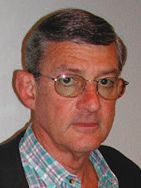Who Cares?
Dr. Robert M. Gresham, Contributing Editor | TLT Lubrication Fundamentals October 2011
A 28-year-old government report still has lessons for those who wish to hear.

A 1983 DOE report stated that four quadrillion Btus of energy were lost in 1978 due to friction and wear—enough to power New York City for a year.
www.canstockphoto.com
I HOPE THE ANSWER to the headline’s question is “everyone”—whether they know it or not.
The obvious follow-up question is, “Who cares about what?” The answer to that is, of course, tribology. What else!
By now you’ve deduced that this article has some elements of “preachin’ to the choir” in it. However, sometimes it is worthwhile for those closest to a situation to take a step back and ponder why it is that we all do what we do.
I recently had occasion to reread an 1983 report by the Department of Energy on the topic of energy conversion and utilization technologies (ECUT). This report was important because at that time it drove research, development direction and funding for both industry and the government for quite a number of years. It most certainly affected the direction and growth of my company, as well as my technical development and perspective.
The main purpose of the report was to identify six major industrial “tribological sinks” where significant lost energy could be saved through the application of technologies to reduce friction and wear. This report remains relevant because as a society we are still striving to conserve energy and live in a more sustainable manner. We have made many improvements, but opportunities still exist. DOE ought to update this report to again provide the basis for needed course corrections.
The ECUT report identified four quadrillion Btus of energy that were lost in 1978 due to friction and wear. “Enough to power New York City for a year,” the report stated. That’s a number that is hard to imagine. Consider the growth of the U.S. in the last 30 or so years—can you guess, even with the improvements we have made, what that number likely is now?
So what were the tribological sinks back then and are there still opportunities in these areas? The six key industries are (1.) mining, (2.) agriculture, (3.) primary metals, (4.) chemicals/refining, (5.) pulp and paper and (6.) food processing.
The report’s first major conclusion was that material losses from wear are greater than energy losses from friction. This led to the conclusion that reducing material wear losses greatly increased equipment life and reliability.
As a result, schools suddenly began to offer courses in material science. At the time, ultra-thin physical vapor deposition coatings consisted of titanium nitride for class rings and cheap watches because of its attractive gold color and wear resistance. After the report was issued, the whole technology of ultra-hard, wear-resistant materials and coatings was explored.
In the metalworking industry, it was estimated that material and friction losses incurred in such basic operations as drilling, sawing, forming, forging, etc., were 7.7 x 1012 Btus and 20.2 x 1012 Btus, respectively. This provided a total opportunity of 27.9 x 1012 Btus energy savings (about the equivalent of 4.8 million barrels of oil).
Now in the metalworking industry, cutting tools are all made from these kinds of materials or coatings, leading to longer tool life and finer, more precise machining. Even at the consumer level, drill bits, saws, dies, grinders and similar tools bought at the local hardware store now commonly utilize so-called material and surface modification technology.
Another obvious opportunity was identified in the transportation sector. Researchers estimated that about 26% of all energy was consumed in this area, at the time about 19 x 1015 Btus. Much of this energy was consumed in overcoming tribological losses, material wear and friction. Mechanical inefficiency in both engine and drive train sopped up significant energy, as did the more subtle effects of rolling friction and streamline design (or resistance friction due to air flow).
Back then most cars strained to get 10 mpg, and oil had to be changed every 2,000 miles or less. Years of research and development in engine and piston design, gearing, transmissions, combustion control, materials, etc., have led to today’s even larger cars getting 20-25-plus mpg with smaller cars approaching 40 mpg. Oil change intervals are on the order of 7,000 miles and higher. Older folks probably have noticed that when you take your foot off the gas, cars now coast for quite a long distance. Many of these same improvements have been applied to the trucking and railroad industries.
Prior to the ECUT report, most tribology-related research was in the area of component development, fluid film formation, elastohydrodynamic lubrication and contact mechanics. As a result of the study, research shifted toward development of advanced tribo-materials, liquid and solid film lubricants, coatings (especially hard wear-resistant coatings), ceramics, surface modification and advanced sealing technologies.
Also developed were novel characterization and testing techniques including computer-assisted simulation and characterization. Research on the mechanisms of friction, wear and tribochemical reactions at the atomic and subatomic level blossomed. This research also centered on how to operate at higher temperatures—where many materials, coatings and lubricants begin to break down but where machines like jet engines operate more efficiently. As a further result of the report, the whole technology of proactive reliability and condition-based maintenance was born.
I hope I’ve illustrated the importance of the ECUT study and the importance and significance of the tribology community’s response to that study and its resultant contribution to our society. Today the application of tribology-oriented science, technology and best practices has clear and obvious financial and environmental sustainability impact on our society.
So back to the question, “Who Cares?” Everyone!

Bob Gresham is STLE’s director of professional development. You can reach him at rgresham@stle.org.